Architectural works in Ho Chi Minh City have long been well-known throughout Vietnam and over the world. Strongly influenced by the famous French architect, Gothic or Roman architectural style, these works not only retain great values in terms of architecture but also deserve one of the unique tourist attractions when tourists participate in Vietnam travel to this famous dynamic city. Its impressive design harmonizing with the natural landscapes has turned these architectural works into the symbols of the city annually attracting both domestic and international tourists. Tourists will be definitely surprised and impressed when admiring this unique design.
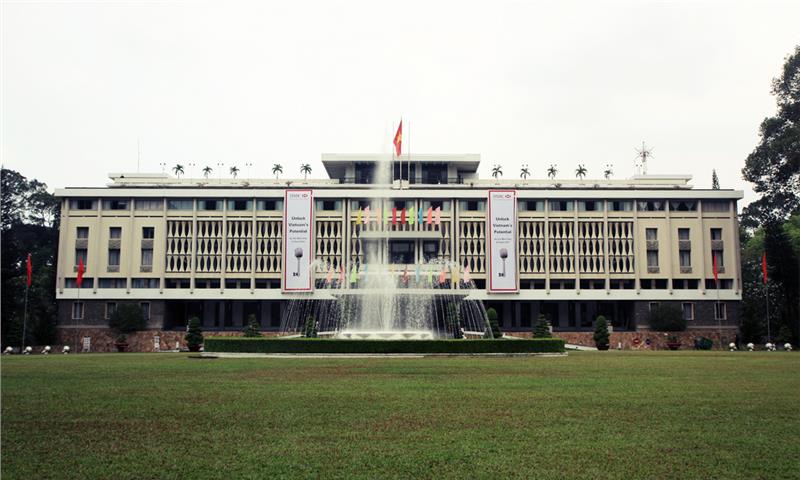
Reunification Palace, formerly known as Norodom Palace was started its constructions on 23rd February 1868 and completed in 1871 under the sketches of architect Hermite. The palace was built on an area of 12 hectares including a large mansion with its frontage 80 meters wide, a living room containing 800 people inside and a large campus with the great number of trees and lawns. In particular, most of construction materials were transported from France. In 1962, a new palace was rebuilt on the old land under the design blueprints of architect Ngo Viet Thu. Reunification Palace is nowadays the appealing tourist site attracting tourists at home and abroad in the journey of discovering Vietnam travel to Ho Chi Minh City.
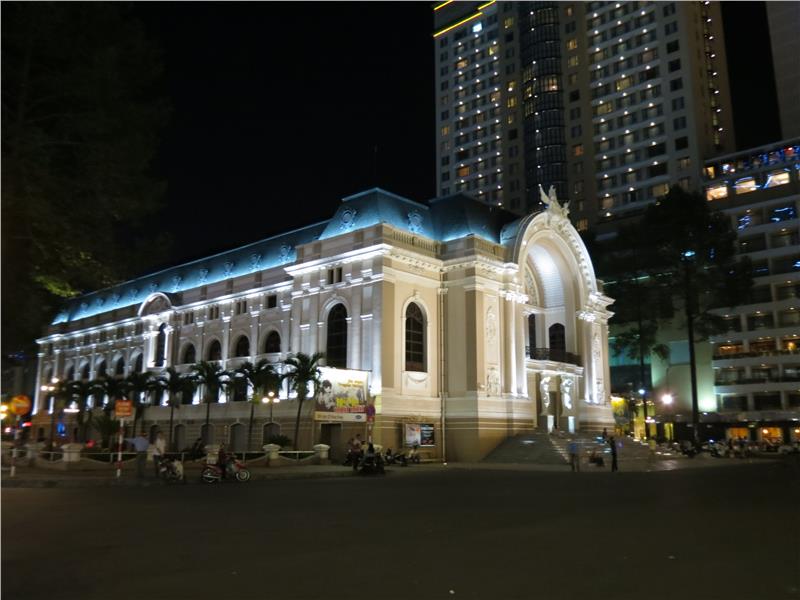
Situated in the city center, Opera House is situated on Dong Khoi Street, district I. It is considered the versatile theater of the city organizing art performances and hosts numerous major events as well. Completed on 1st January 1900, Opera House belongs to the oldest types inspired by architecture in Western Europe and is considered as one of enchanting tourist attractions in Ho Chi Minh City.
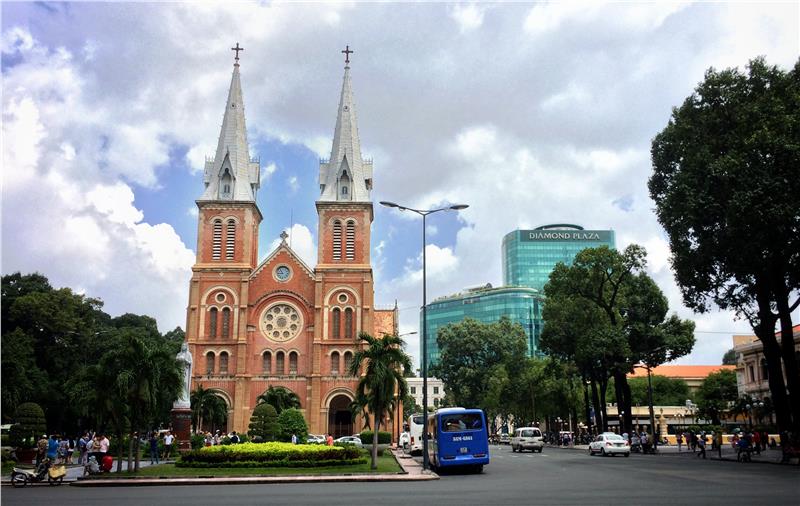
The church was built from 1877 to 1880 with a width of 35m and 93m long. It was designed by the French architect Bonard imitated the architecture of Notre Dame de Paris. It used to be one of the most beautiful churches in the colonies of France at that time. In 1895, the church built 2 bell towers with the height of 57,6m each. These 2 towers retain 6 large bronze bells weighing 25,850 tons, which is now the largest bell set in Vietnam. Standing in front of the church is the 8.5 ton statue of Our Lady of Peace made of Italian marble with 4.2 m high designed in Rome and built in 1959. Saigon Notre-Dame Basilica is one of the bewitching attractions alluring the great number of both domestic and international tourists in Vietnam tour packages to Saigon travel.
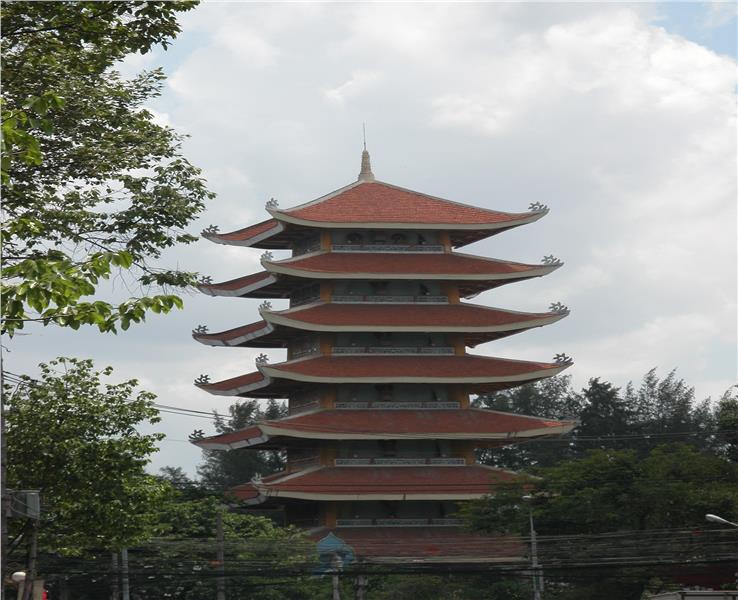
The pagoda was started its construction under the supervision of architect Ngo Viet Thu on 26th April 1964. It was designed with a 7-storey tower curved roofs and delicate carvings in the natural airy space. The pagoda's architecture harmonizing with excellent scenery was deeply inspired of Vietnamese architectural style. Vietnam National Pagoda has been the convergence of numerous Buddhists and tourists when participating in Ho Chi Minh City travel so far.
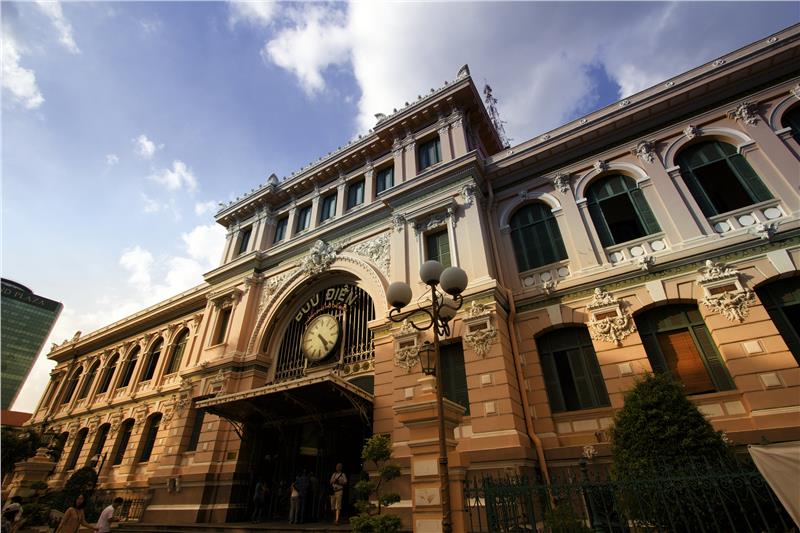
Saigon Central Post Office is located at No. 2 Cong Xa Paris Street, district I. Being a mixture of Gothic, Renaissance and French influences, the building fascinates tourists by its typical colonial French features, from exterior to interior decorations. It was built around 1886 – 1891, based on the design of Gustave Eiffel – a famous French architect along with Foulhoux, his assistant. Located adjacent Saigon Notre-Dame Basilica and Diamond Plaza shopping center, the architectural works creates the vivid and beautiful interaction and becomes the highlight of Saigon in Vietnam tourism alluring tourists.
The facade of Post Office is decorated with names of famous French celebrities such as Laplace, Voltaire, Arage together with the large number of eye-catching decorative squares. There is also a big clock on the dome of the building. Setting foot on inside, tourists will have a chance to admire the unique Gothic architecture and more than 35 customer service desks. In addition, there are stalls selling souvenirs and Vietnamese handmade products.
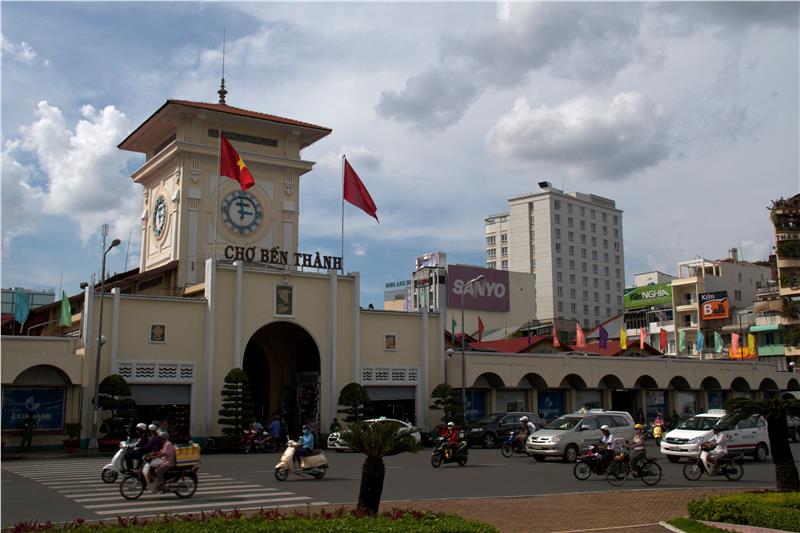
Ben Thanh Market has long been considered as the symbol of the city. After many changes in construction positions and its name, the market was started its construction in 1912 and completed with the name of Ben Thanh Market as today in March 1914. Ben Thanh Market retains 4 doorways and 4 towers mounted clocks overlooking 4 central streets in District 1, namely Le Loi street, Phan Boi Chau street, Phan Chu Trinh street respectively in the north, south and east and the main gate with the high tower overlooking Quach Thi Trang Square.
Currently, there are over 3,000 wholesale and retail stalls in the market with the wide range of goods from food, daily supplies to luxury commodities. The market starts its operations from 4 am and closes at 6 pm daily. Apart from serving the trading of the citizens, the market also yearly welcomes millions of tourists at home and abroad to visit and go shopping. Ben Thanh Market is also one of the most the impressive tourist Ho Chi Minh attractions.
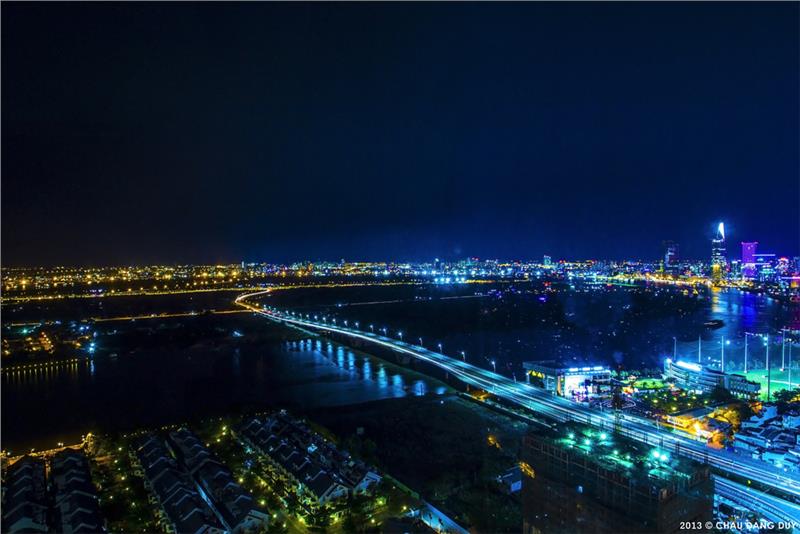
Thu Thiem Tunnel is the most modern underwater tunnel in South East Asia. After nearly 7 years of construction, Thu Thiem Tunnel was officially opened to traffic on 21st November 2011. The tunnel plays an important role in connecting 2 riverbanks and reducing the load of Saigon Bridge; simultaneously, it motivates the development of the dynamic city.
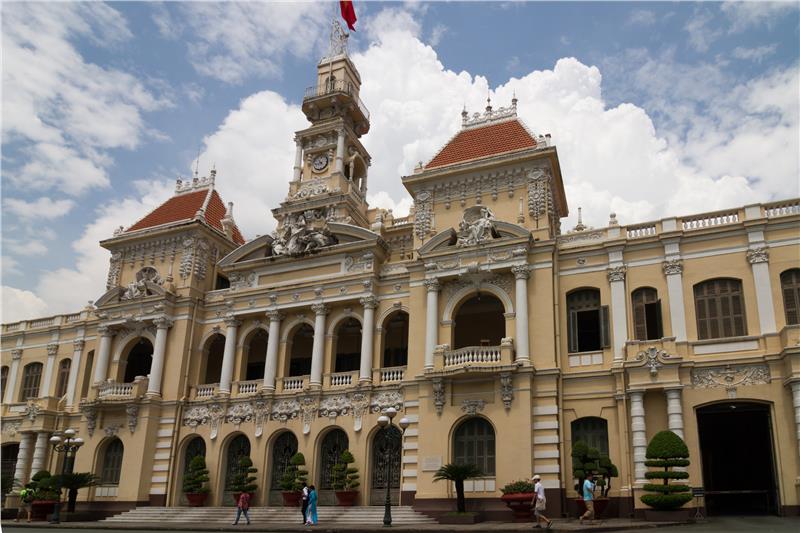
Ho Chi Minh City People' Committee, also known as Ho Chi Minh City Hall situated on Nguyen Hue Boulevard, district 1 was built from 1898 to 1909 under the design of architect Gardes imitating bell tower architecture in North France. Before becoming the workplace of Ho Chi Minh City People' Committee, the building was Dinh Xa Tay and then renamed as Saigon City Hall. It is considered as one of the most beautiful architectural works in Ho Chi Minh City.
Nha Rong Wharf - Dragon House Wharf
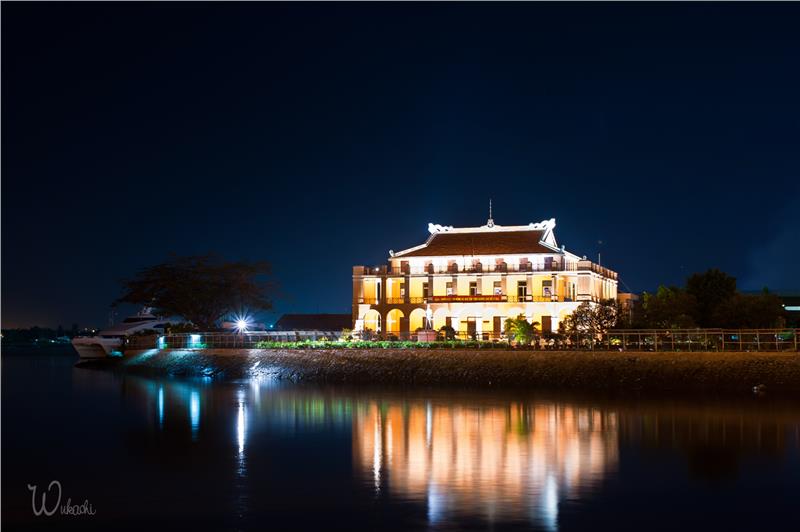
Nha Rong Wharf started its construction on 3rd April 1863 for the purpose of the accommodation for General Management and selling the train tickets. Right here, on 6th May 1911, Nguyen Tat Thanh, a patriot young person set foot on ship naming Amiral Latouche Tréville to seek the ways to save his country. Nha Rong Wharf is now Ho Chi Minh Museum - one of the branches of Ho Chi Minh Museum and memorial monuments of President Ho Chi Minh in the country annually attracting the large number of tourists.
Museum of Vietnamese History
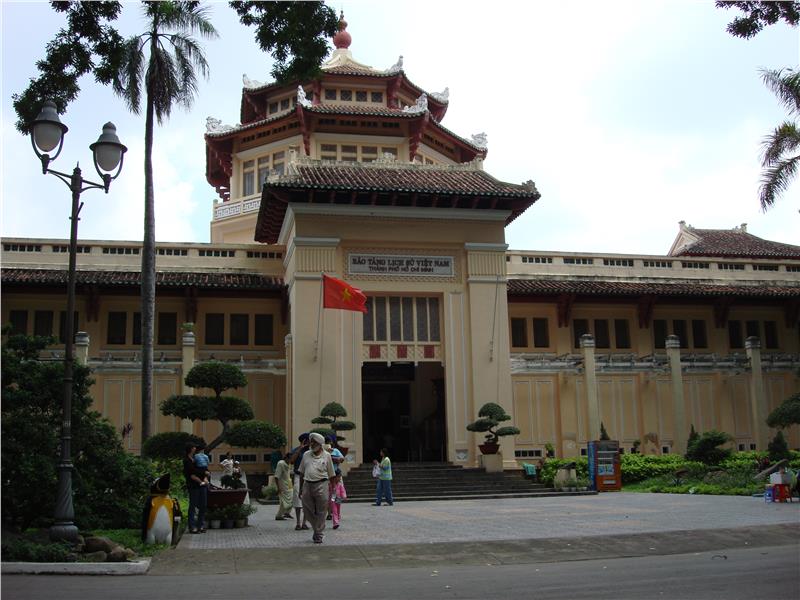
As one of the unique tourist sight of Ho Chi Minh City tourism, Museum of Vietnamese History is home to preserve and display tens of thousands of precious artifacts collected throughout the country and foreign countries. The museum was officially built under the design of architect Delaval with "innovation Indochina" architectural style. After 30th April 1975, the museum has been intactly transited under the takeover of Revolutionary Government. The museum was renamed into Ho Chi Minh City History Museum on 26th August 1979. It has been then given a new name as Museum of Vietnamese History Ho Chi Minh City and existed so far.
